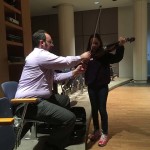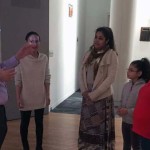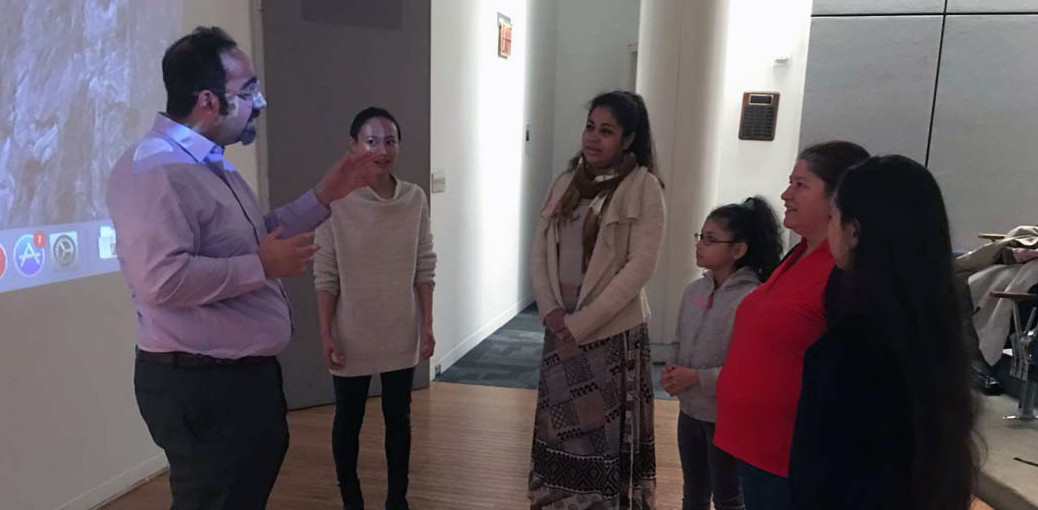In the 20th century, Egypt had a dynamic film industry that produced a large number of musicals, serving as a vehicle for many of the greatest singers, composers, and dancers from around the Arab world. In our course on Sunday 5/1 we watched 6 different clips from Egyptian movie musicals, to illustrate some key themes.
The first clip (https://youtu.be/guavIq-a7Tw) features Umm Kulthum performing her famous song “Ghannili Shwayya” from the 1945 film Sallama. Umm Kulthum (https://www.youtube.com/watch?v=3Poj8mdKHw8) was the most famous singer from anywhere in the Arab World in the 20th century, and is #2 in the list of most-recorded artists in the world (after the Indian film singer Lata Mangeshkar). Her career started in salons in Cairo in the 1920s, and she starred in 6 films in the 1930’s & 40’s. Her career continued until her death in the early 1970s, and in the last several decades she was featured in weekly radio broadcasts across the Arab world, in addition to frequent live performances, and major new songs composed for her every year. This iconic singer also had a key role in Egyptian independence and nationalism, supporting Nasser during the period. The film Sallama, her most famous, is a biographical film about a singer from Saudi Arabia during the early Islamic period (6th or 7th century), and the song “Ghannili Shwayya” (“sing to me a little”) celebrates all of the joys of singing – which according to the song can cure the sick, heal a broken heart, communicate with birds, and bring back the dead.
We focused next on the dancer Naima Akef (https://en.wikipedia.org/wiki/Naima_Akef), one of the most important dancers in film during the 1950’s. She was from a family of circus performers, and was a woman of many talents who sang and acted in addition to dancing. We saw her first in the lighthearted clip “Min Hubbi Fiik Ya Gaari” (https://youtu.be/wr7DvgE40-c) also featuring the singer Hurriya Hassan. The lyrics talk about being in love with a neighbor, but having to hide it so the rest of the neighbors won’t find out. The second clip featuring Naima Akef is of the song “Habl il-widad in’ata3a” (https://youtu.be/6ujKliIDGUc), from the tragic 1955 film Aziiza, which tells the story of a woman who dances to make money to put her sister through school (they are both orphans), but who pretends to be a respectable hospital employee due to the shame associated with belly-dance. The film doesn’t shy away from illustrating the complexity and hypocrisy of Egyptian society’s relationship with dance – a society where, during this period, every wedding had to include a belly-dancer, but if your daughter became a dancer you would disown her. Nor does the film shy away from illustrating the violence that women can be subject to under such compromising circumstances, revealing a feminist tendency in its theme and treatment (something true of several of Naima Akef’s films). The film clip we watched is a nightclub scene where Aziiza performs in the evening, and also features the singer Mohamed Indeel (my own ensemble, Zikrayat, recreated this number in a multi-media production:https://youtu.be/Q_gb8SutRAc).
Belly-dancing (known as “Raqs Sharqi” in Egypt) as portrayed in these films reflects the complex global history of the dance form. The dance originated from indigenous dance forms practiced in Egypt, but evolved to a stage presentation as a result of Western influence, after being shown in the Paris and Chicago World’s Fairs of the 1890’s. It was actually in early 20th century orientalist Hollywood films that the 2-piece belly-dance costume was invented (in the 19th century female dancers didn’t expose their belly); when Western tourists went to Egypt that’s what they expected to see, so enterprising night club owners in Cairo adopted the costume and developed the stage presentations in the 1920s and 30s that became the modern form of the dance. Naima Akef as well as Samia Gamal got their start in these clubs.
Samia Gamal is featured in the next clip “Ma alli wu ultillu” (https://youtu.be/MtwmkdmFJXk) with the singer, composer & oud virtuoso Farid al-Atrash. In this comedy film, Samia and Farid (who had an off-stage romance as well) are married performers, but another woman is trying to get in the way. The song is set as a theatrical presentation (another feature of Cairo Night-life during the early 20th century), a show-within-a-show, and Farid sings about not letting backstabbers get in the way of love. Farid was also one of the most famous musicians in Egypt in the 20th century, and he starred in around 50 films, many of which he produced himself – in addition to composing all the music for, starring, singing & playing the oud. The next clip we watched, also featuring Farid, is the song “Ya Salaam 3ala hubbi wu hubbak” (https://youtu.be/amjqJ_MGg0A), a duet with the singer Shadia. In the song, Farid and Shadia are pretending to be in love because their families want them to marry, and they have to buy some time and agree to the engagement while they figure a way out. But in reality they hate each other, and sing the romantic lyrics sarcastically while playing pranks on each other – then try to appear happy when the family comes to check on them. Of course they eventually do fall in love, as is always the case with these goofy comedies!
The final clip, a romantic serenade by the crooner Abdel-Halim Hafez, is “Ana lak 3ala toul” (https://youtu.be/xBoOpjKuDKc), a beautiful fusion composition that is more Western music than Arabic music, with its sweeping orchestral harmonies and textures. As we discussed in the class, many aspects of the Egyptian film tradition were borrowed from the West. Egypt didn’t have a robust theater tradition prior to the 20th century; in addition, the major U.S. film studios such as Universal & Paramount had movie theaters in Cairo in the first decades of the 20th century, to show Hollywood’s productions. As a result, Egyptian films borrowed heavily from Hollywood in terms of film genres, plots & structure, and numerous production aspects. However, traditional Arabic music and dance were used in many of these films (and the first 5 clips above reflect a traditional approach to music even though the songs were newly composed for the films).
Western music was nonetheless very influential, as a result of several factors beyond its presence in the Hollywood films shown in Cairo during the period. First, The Cairo Opera House was first built in 1872, which commissioned Verdi’s famous opera “Aida” – and from that date, Cairo hosted a full Western opera orchestra. Second, starting in the 1930s the U.S. exported Jazz (and Latin Jazz) all over the world, not simply to Europe, and Egyptians were familiar with it. Third, and more generally, Egypt was tremendously cosmopolitan in the 19th and early 20th centuries, and Egyptian composers such as Sayyid Darwish, Mohamed Abdel-Wahhab, and Mohammed al-Qassabgi began incorporating Western music into their compositions from the very early 20th century. All of these influences meant that there was a great deal of borrowing and fusion in the film scores & song and dance numbers in Egyptian Films during the period.



https://www.youtube.com/watch?v=guavIq-a7Tw
https://www.youtube.com/watch?v=3Poj8mdKHw8
https://www.youtube.com/watch?v=wr7DvgE40-c
https://www.youtube.com/watch?v=6ujKliIDGUc
https://www.youtube.com/watch?v=Q_gb8SutRAc
https://www.youtube.com/watch?v=MtwmkdmFJXk
https://www.youtube.com/watch?v=xBoOpjKuDKc

 New New Yorkers
New New Yorkers